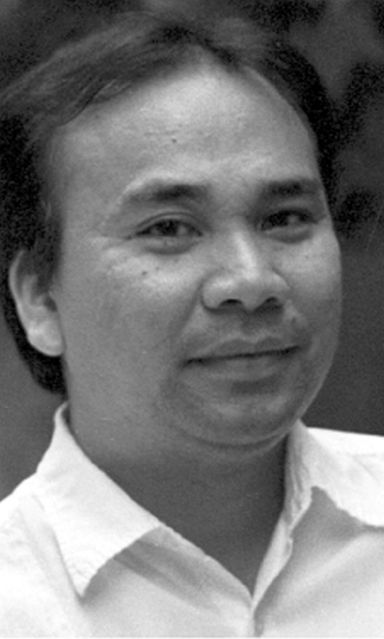
BERSALES
Archaeologists and some historians love cemeteries not because we live morbid lives. Far from it, we see these cities of the dead as mute repositories of information and historical data. Every cemetery is an artifact, which explains why this is now the nth time I have written about preserving the Cebu Chinese Cemetery — one of the dirtiest and most unkempt of cemeteries I have been to not just in the country but outside.
And so it comes like a fresh breeze that a very welcome relief will finally be at hand, with the news of its cleanup and restoration.
The Cebu Chinese Cemetery has unique features that are important to consider. One, its welcome arch is prewar and survived the bombings of Cebu.
Two, right at the heart of the original prewar section of this cemetery is a mausoleum in the shape of a ba-gua, the octagon so important in Chinese geomancy, where the Unchuans, are buried. The patriarch Benito Tan Unchuan was a major force in the purchase of the cemetery property way back in 1909, if I’m not mistaken.
Four walkways or paths emanate from this octagon-shaped mausoleum, a clear adherence to good feng-shui principles. On its northern way is the great obelisk marking the burial place of the Sy/Gaisano matriarch, Doña Modesta Singson-Gaisano and some of her deceased children. Lining the sides are some of the oldest tomb designs one can ever find: tomb slabs in the form of turtles, symbolic of long life.
The cemetery is home to the remains of Manuel Gotianuy, father of Atty. Augusto Go, owner of the University of Cebu, who has by his lonesome been campaigning to restore this cemetery to its old glory.
As mentioned in previous columns, the cemetery is also home to Lucio Uy Herrera and Yap Anton, late Spanish and early American greats of Cebuano Chinese history. (On a brief visit to the cemetery last year, I saw children being taught as if in class inside the latter’s mausoleum, which is designed with art deco elements. I was told that this was a project by one of the grandchildren of Yap Anton to educate the children of the informal settlers living inside the cemetery. I’m not certain if this was true or not but well this is one case of adaptive reuse beyond the usual living quarters that has been the fate of many mausoleums inside.) But there are others that I have not mentioned yet.
In the heat of World War II and the Communist sweep of China, the Chinese in Cebu was also affected by factional strife between adherents of the Guomintang (Nationalist China under Gen. Chiang Kai-shek) and the young Communists on the other (under Mao Ze-dong). And this cemetery contains two who were mercilessly assassinated most probably because of this political factionalism: Lim Thian Ting and Go Tao, very close friends who both lost their lives to unknown assailants barely months after Cebu was liberated.
On the top margins of the 1914 Cebu Guide-Directory, published by Pedro Rivera-Mir, one finds the name Tomas Liao Lamco, grocery owner and importer. His remains are still at the cemetery, near where the mausoleum of Lucio Uy Herrera (Uy Mayan) is located.
The “Who’s Who of the Chinese in the Philippines” lists important names in Cebu other than the earlier-mentioned Manuel Gotianuy and Yap Anton.
Then there is Lim Bonfing, founder of a huge hardware and export/import business together with his brothers Limjiaco, Lim Bonsing and Lim Bonjuy, a firm that has survived to the present. Then there is also Go Occo, whose famous store also survived well into the present. His story is quite interesting in that he had the misfortune of having his store burned four times and yet still managed to build it into a huge profitable firm. Others mentioned still reverberate among the Chinese community: Go Chan, Uy Chu Lay (of Joaquin Castro and Co.), Tan Unjo, brother of Benito Tan Unchuan; Timoteo Yu Tiong; Lim Chiu; Go Lam; Go Bon Lee; Dy Te; and Juan Asan (Kingche).
Their brief bios in that book and their photographs would be best complemented by a brief foray into the cemetery to find out whether their families have held fast and honored their resting place or have surrendered and moved them elsewhere.
Well, for those who have stayed behind, the good news is finally in sight. There are negotiations to help the informal settlers find other places more decent and appropriate for humans to settle in and to finally leave the dead in peace and tranquility.
For a people with 5,000 years of history, people who always revere their ancestors and pay homage to their resting place, I still cannot explain why this cemetery was left to rot and decompose like some unforgotten corpse of some great Chinese businessman that so many hated in life. Perhaps paeans to history and the historic role of men and women buried there have finally awakened the local Chinese community to unite and save this piece of property containing their final direct connection to their Chinese homeland — their great grandparents who as young men and women traveled here with nary a dollar or peso to eventually live prosperous and raise generations that have survived into the present.
Disclaimer: The comments uploaded on this site do not necessarily represent or reflect the views of management and owner of Cebudailynews. We reserve the right to exclude comments that we deem to be inconsistent with our editorial standards.
